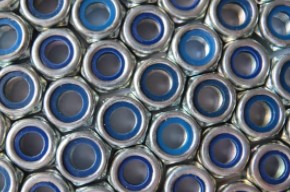Hotline: 4008816860
Hotline: 4008816860
Nuts, as essential fasteners in mechanical assembly, exhibit a remarkable diversity in both types and materials to cater to a wide range of applications and environments.
Types of Nuts:
Hex Nuts: The most common type, featuring a hexagonal head for easy tightening with a wrench or socket.
Lock Nuts: Designed to resist loosening, either through a spring mechanism (spring lock nuts) or a nylon insert that grips the bolt threads (nylon insert locknuts).
Wing Nuts: Featuring wings or ears for hand tightening, often used in applications where frequent adjustment is required.
Castle Nuts: Typically used with a cotter pin to prevent loosening, common in aircraft and automotive applications.
T-Nuts:A T-Nut, also known as a Tee Nut, is a threaded insert with a T-shaped body designed to be inserted into a pre-drilled hole, allowing for easy attachment of bolts, screws, or other fasteners perpendicular to the surface. It's commonly used in woodworking, sheet metal, and assembly applications.

Materials of Nuts:
Steel: The most commonly used material due to its strength, durability, and cost-effectiveness. Stainless steel is a variant offering superior corrosion resistance.
Brass: A softer, more decorative material often used in applications where appearance is important.
Aluminum: Lightweight and corrosion-resistant, ideal for reducing overall weight in structures and equipment.
Bronze: Similar to brass, but with higher strength and wear resistance, used in specialized applications.
Nylon and Plastic: Lightweight, non-conductive, and corrosion-proof, perfect for applications where metal fasteners are not suitable.
Titanium: Extremely strong and lightweight, used in high-performance and aerospace applications where weight reduction is critical.
The choice of nut type and material depends on various factors such as the required strength, resistance to corrosion, ease of installation, and the specific application environment. Understanding this diversity allows for the selection of the most suitable nut for each unique situation, ensuring reliable and efficient mechanical assemblies.